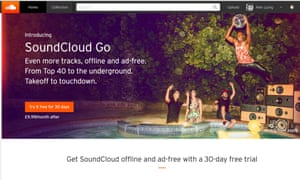New and Digital media offers media institutions a different way of reaching
audiences.
Consider how and why media institutions are using
these techniques?
New and Digital media has had a huge impact the way audiences
consume different media texts. Techniques in which the media is conveyed
to audiences, has changed significantly over the years because of the dramatic
upgrade in technology.
Social media networking sites have had an immense impression on
the way people consume the news, in comparison to the traditional way of
receiving news. Social media networking sites such as twitter allow media
institutions to generate a greater interaction and collaboration with the
institution and its audiences through the use of the comments section, where
discussions may be held to controversial issues. This heavily displays
democratisation, as people from of all backgrounds, religion, beliefs,
sexuality, gender, high or working class and ethnicities can take part in the discussions
and voice their opinion on there.
Conversely, traditional platforms such as newspapers and the TV,
people are more passive when receiving the media. This taps into the hypodermic
needle theory as it suggests that audiences are injected with hegemonic social,
political and economic ideologies and opinions that the institution/ media
conglomerates and other people in power may have. (Two step flow).
Furthermore, other social media examples such as Instagram also
allow media institutions to reach out to audiences about the news. This is
through the regular updates on the news and allow for hash tags such as
#prayforParis, during the recent attacks. It helps people engage with the news
corporations such as sky news or the BBC, as programmes are regularly updated
on them, Instagram too includes a comments section underneath the
picture/poster they post. Similarly, news corporations also use Facebook to
update its audiences with the latest or breaking news. Facebook allows you to
repost posts about the news which also helps promote the institution as well as
the breaking news to audiences.
However, some may argue that institutions that use this technique
to convey their content to audiences may be under threat by social media as
news nowadays is likely to be exposed on social networking sites before the
news. This can be done through citizen journalism and user generated content
posted by members of the audience. A well-known example of successful user
generate content is displayed though the video of Eric Garner which gained a
lot of public attention. After the video was posted online police brutality was
taken more seriously and even a campaign called black lives matter was
organised by the general public, voicing their opinions on some of the
injustices that had been marginalised by traditional media. Social media such
as Twitter and Instagram also contributed to raising awareness on this matter
though the increasing hashtags #ICANTBREATHE which symbolises the death if Eric
Garner.
Additionally, websites are also used quite frequently by
institutions to provide audience’s with up to date digitalised print news. This
also allows space for comments in the comments section usually at the bottom of
the page, an example of this is The Guardian a left wing hard news corporation
who believes that ‘newspapers have to adapt’ just like Murdoch says. However,
in order to increase revenue, some online papers have created a pay wall. This
is evident though the Times going online and creating a pay wall in in order to
receive the news making a huge increase to their revenue. However some
corporations may fail to capitalise this technique and may find a dramatic
decrease in their economy such the Sun whose audience were from the demographic
of C2, D and E category.
On the other hand some news corporations may use technology
negatively, this is apparent through the phone hacking scandal. Murdoch’s news
of the world corporation which was involved in a phone hacking scandal.
 Our online efforts to boost local democracy
Our online efforts to boost local democracy



